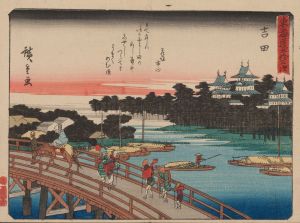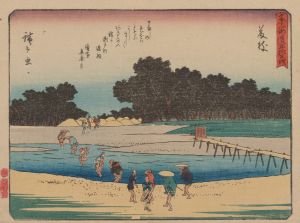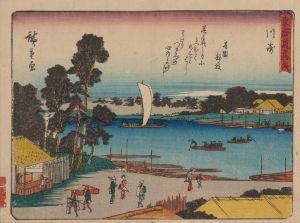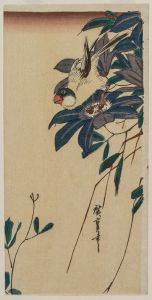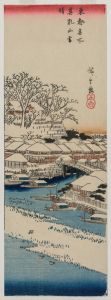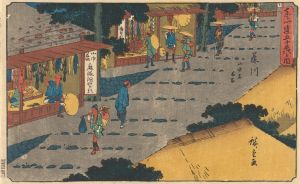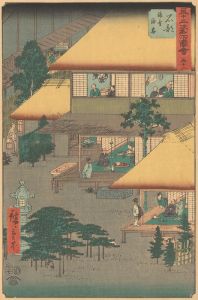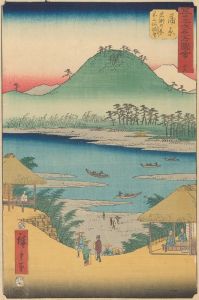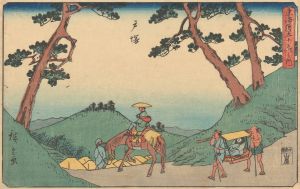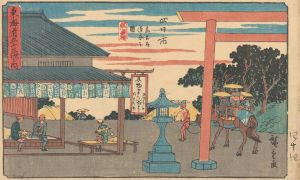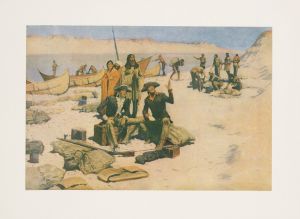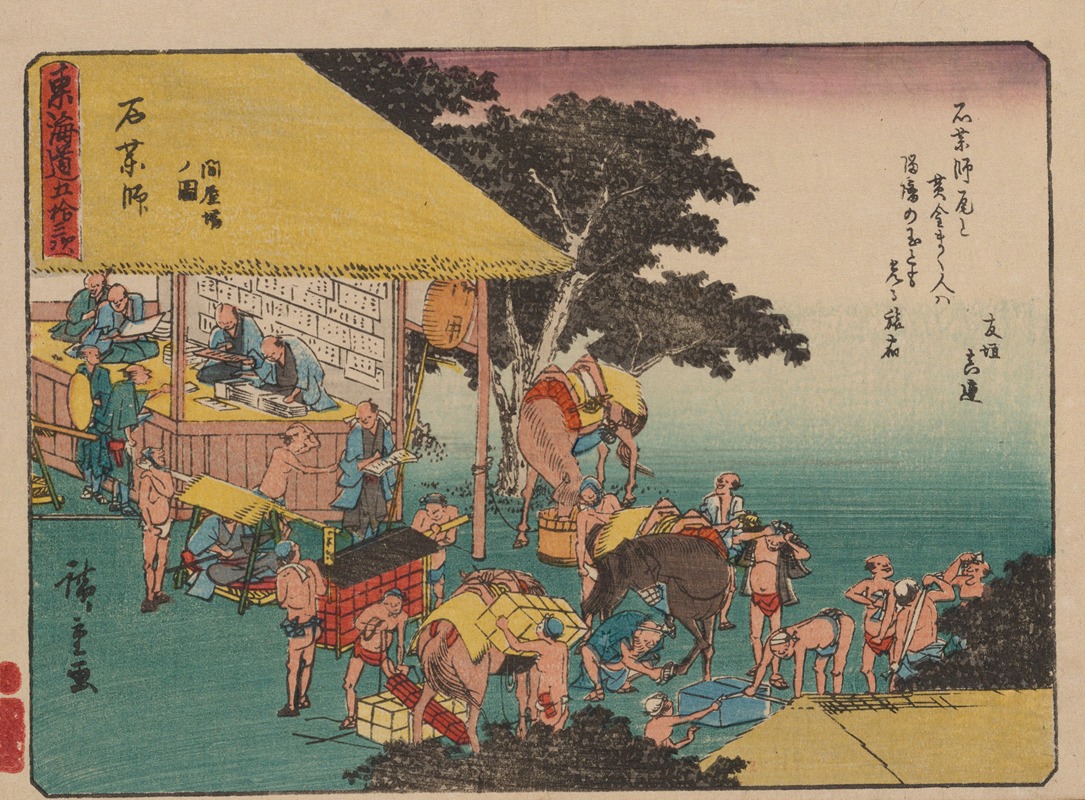
Tokaido gojusantsugi, Pl.45
A hand-painted replica of Andō Hiroshige’s masterpiece Tokaido gojusantsugi, Pl.45, meticulously crafted by professional artists to capture the true essence of the original. Each piece is created with museum-quality canvas and rare mineral pigments, carefully painted by experienced artists with delicate brushstrokes and rich, layered colors to perfectly recreate the texture of the original artwork. Unlike machine-printed reproductions, this hand-painted version brings the painting to life, infused with the artist’s emotions and skill in every stroke. Whether for personal collection or home decoration, it instantly elevates the artistic atmosphere of any space.
Andō Hiroshige was a renowned Japanese ukiyo-e artist, famous for his landscapes and depictions of everyday life in the Edo period. One of his most celebrated works is the series "The Fifty-three Stations of the Tōkaidō" (Tōkaidō Gojūsan-tsugi), which consists of 55 woodblock prints, including the starting point at Nihonbashi in Edo (modern-day Tokyo) and the terminus at the Sanjō Bridge in Kyoto. This series captures the scenic beauty and cultural significance of the Tōkaidō road, the most important of the Five Routes of the Edo period, which connected Edo and Kyoto.
Plate 45 of this series is titled "Ishiyakushi" and represents the 45th station along the Tōkaidō. The Ishiyakushi station was located in what is now Suzuka City in Mie Prefecture. This particular print, like others in the series, showcases Hiroshige's masterful ability to blend natural landscapes with human activity, providing a glimpse into the travel and daily life of the period.
In "Ishiyakushi," Hiroshige depicts a serene rural scene, characterized by a lush, green landscape. The composition typically includes travelers on the road, often depicted in traditional attire, engaging in various activities such as walking, resting, or interacting with one another. The background often features natural elements like mountains, rivers, or trees, rendered in Hiroshige's distinctive style that balances realism with artistic expression.
Hiroshige's use of color and perspective in this print is notable. He employed a technique known as bokashi, a method of color gradation that adds depth and atmosphere to the scene. This technique is evident in the subtle transitions of color in the sky and landscape, which enhance the sense of distance and tranquility. The attention to detail in the depiction of foliage and the careful arrangement of figures and elements within the composition reflect Hiroshige's keen observation and artistic skill.
The "Fifty-three Stations of the Tōkaidō" series was highly popular during Hiroshige's time and remains influential in the art world today. It not only serves as an artistic achievement but also as a historical document, providing insights into the geography, culture, and social dynamics of Edo-period Japan. Hiroshige's work has inspired countless artists and continues to be celebrated for its beauty and historical significance.
Hiroshige's prints, including "Ishiyakushi," are often studied for their innovative use of perspective and composition, which influenced both Japanese and Western art. His ability to capture the essence of a scene with simplicity and elegance has made his work timeless, appealing to audiences across different cultures and eras.
Overall, "Ishiyakushi" is a testament to Hiroshige's artistic vision and his ability to convey the harmony between humans and nature. It remains a cherished piece within the "Fifty-three Stations of the Tōkaidō" series, reflecting the enduring legacy of Hiroshige's contribution to the world of art.






